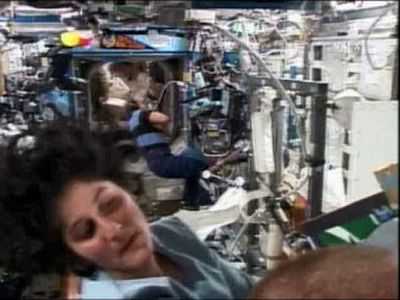Shuttle cleared for re-entry after fix

HOUSTON – Atlantis was cleared Saturday to return to Earth this week after the space shuttle’s heat shield was judged capable of surviving the intense heat of re-entry, and a U.S. astronaut reached a milestone with the longest single spaceflight by any woman.
Atlantis is set to land at Cape Canaveral, Fla., on Thursday, although NASA officials were still deciding whether to keep the shuttle at the international space station for an extra day because of a failure of computers that control the station’s orientation and oxygen production.
“That’s great news,” Atlantis commander Rick Sturckow said of the landing plan.
The shuttle’s 11-day space station construction mission had already been extended to 13 days so a thermal-protection blanket could be fixed during an unscheduled spacewalk. NASA has been particularly sensitive about the space shuttles’ heat shields since the Columbia accident killed seven astronauts in 2003.
Also Saturday, U.S. astronaut Sunita “Suni” Williams set a record for the longest single spaceflight by any woman. Williams, who has lived at the space station since December, surpassed the record of 188 days set by astronaut Shannon Lucid at the Mir space station in 1996.
“It’s just that I’m in the right place at the right time,” Williams, 41, said when Mission Control in Houston congratulated her on the record. “Even when the station has little problems, it’s just a beautiful, wonderful place to live.”
Those “little problems” had been considerable in recent days with the computer system failure on the Russian side of the station. Russian cosmonauts Fyodor Yurchikhin and Oleg Kotov got four of six processors on two computers working again on Friday, and on Saturday they got the remaining two on line.
“In the very beginning, we’re a little bit worried about the state of the computers,” Kotov said during a news conference Saturday. “We were pretty sure our ground team can trouble- shoot this problem and it’s become true. Now we have a good set of computers and the station again looks pretty good and in good shape.”
Engineers in Moscow and Houston had not yet conclusively determined what caused the failure, although the leading theory was changes to the electrical system from the space station’s growth.
The cosmonauts started turning on systems – such as an oxygen machine, a water processor and a carbon dioxide remover – that had been turned off while the computers were down. Today, they planned to test the station’s orientation system, which will be the final benchmark for deciding whether the computers work properly and whether the shuttle needs to stay an extra day.